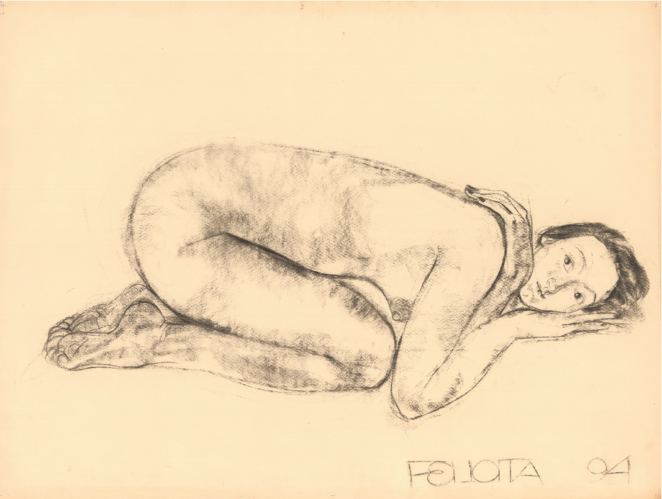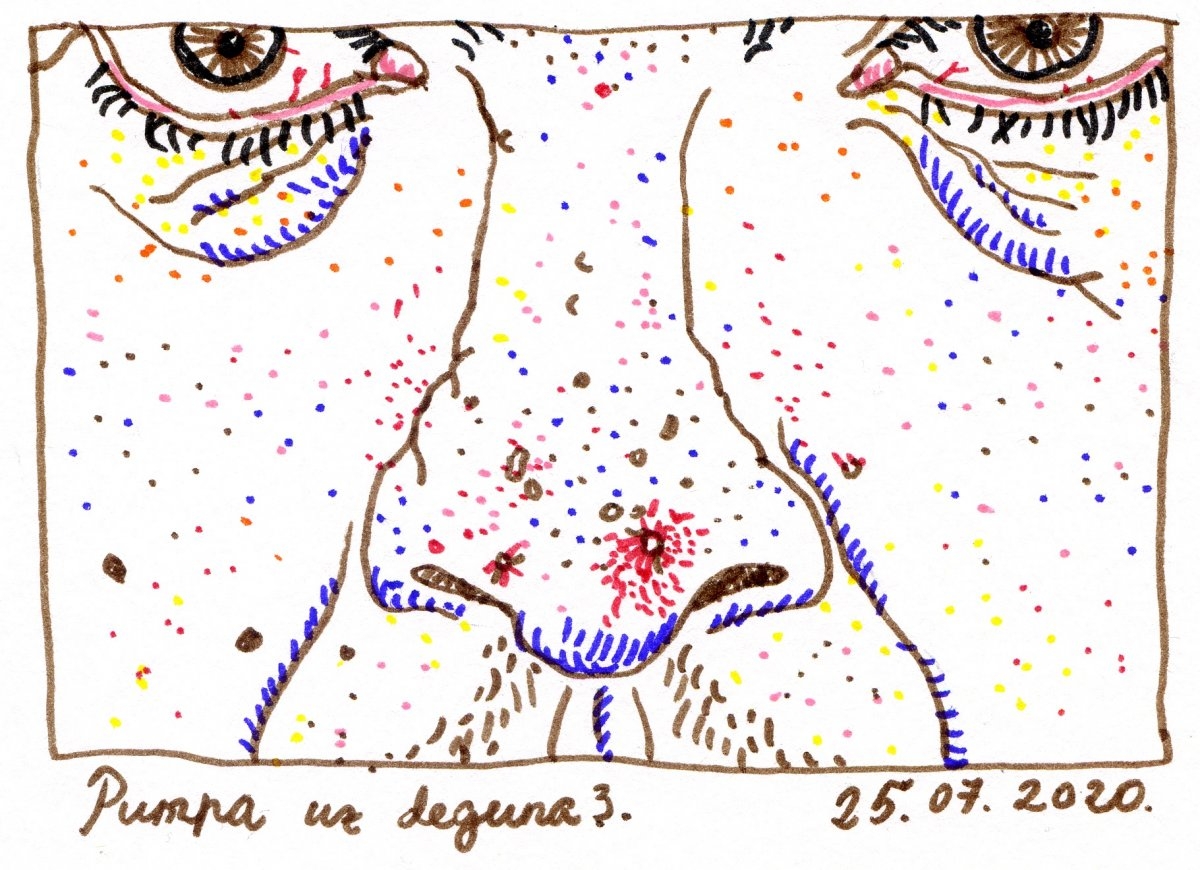Homage to the Tired Eyelid
Homage to the Tired Eyelid is dedicated to the investigation and acceptance of the female body, a conversation channelled towards body positivity. In her series of drawings, the artist’s hand and gaze documents her own body, which is transforming and aging – unique and alive, with its wrinkles, body hair, periods and folds.
This is a woman’s corporeality, individual and private, at the same time recognising the effects of mediated, photoshopped women’s bodies. It is a diary of self-perception that analyses and dissects female body fragments in regular service to capitalism’s machines of desire.
“The body positivity movement is based on the idea that all types of bodies are good and have the right to love themselves. This movement is characterized by attempts to increase the representation of bodies that have been marginalized in the media. (…) There are many sub-directions in this movement that choose a different tone of conversation and a different kind of problematic. Some of them focus on eating disorders, fashion, weight, hair, disability, age, skin colour, sexual orientation, and so on. This movement is based on feminism.” (A.Krivade for feminist zine Samanta).
Lolita. Vaira. Biruta. Žanna. Māra. Felicita.

During her lifetime, Felicita Pauļuka’s (1925- 2014) works were widely exhibited and earned her recognition, yet the demand for legends from both historians and their audiences have burdened Felicita Pauļuka with the mark of a wunderkind (she entered the Art Academy at the age of 16 without a secondary school diploma) and a muse (painter Jānis Pauļuks’ wife of ten years).
Survival Kit 12 attempts to introduce other nuances – Felicita Pauļuka’s works are exhibited alongside contemporary feminist artist Ingrīda Pičukāne’s diary of drawings, which provides an attentive and honest look at the female body, aiming to recover the unevenness omitted by art history; furthermore, both artists’ works are situated at the House of Aspazija, a woman who was a crucial figure in early 20th century feminism in Latvia.
Survival Kit 12 invites us to update the legends and acknowledge both the self-confidence of the sixteen-year-old entering the Art Academy and the choice to live outside of the patriarchal society’s frame of expectations, as emancipated acts. Nude paintings, often multi-layered and complex female representations, boldly questioning the placement of a man’s gaze, were an essential part of Pauļuka’s oeuvre. “Palms and feet also have their life story. Therefore, for me, the nude is an expanded portrait in which I involve the entire body and express the essence of the portrayed,” said Pauļuka.
The Future Bread
Dagna Jakubowska and Joanna Gawrońska – Kula

The Future Bread Dagna Jakubowska & Joanna Gawrońska-Kula installation, performance, recipes, 2021
Today, our desires and consumption habits are shaping the environment and driving climate change with far greater force than geological phenomena. We are facing the sixth great wave of species’ extinction in the Earth’s history – the annihilation of entire ecosystems. Temperatures and sea levels are rising, glaciers are melting. The weather is becoming more extreme, the strength of hurricanes and cyclones is growing, droughts and floods are threatening crops. The stream of climate refugees is about to increase, and with it, potential conflicts. Along with the climate crisis comes the food crisis.
As we face new challenges of survival and nutrition, we would like to propose an emergency food kit – The Future Bread – a survival menu on a damaged planet. We take into consideration the autumn context of the Harvest Festival and the moment of stockpiling for the challenging winter period. The Future Bread is: – a practical collection of bread recipes – for times of crisis; an attempt to create prototypes of the bread of the future – a concrete food solution allowing a reduction in the exploitation of the planet; a project for a more sustainable diet in harmony with the rhythms of nature – a warning for the future, a record of different climate and food scenarios for our planet.
The result is a series of innovative, experimental recipes and dishes based on different future scenarios. The focus is primarily on imaginative speculation about what the bread of the future will look like, between utopian hope (and abundance) and possible apocalypse.




